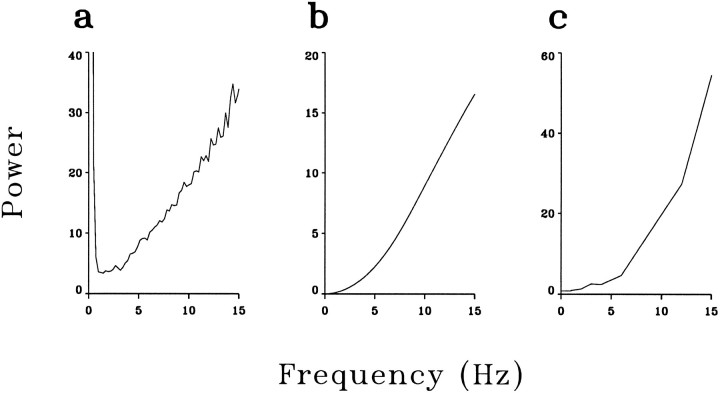Fig. 4.
Temporal-filtering properties of an LGN neuron measured with different methods. a, Power spectrum of an LGN spike train in response to full-field white noise with 100% contrast.b, The square of the Fourier transform of the temporal receptive field measured with the same full-field white noise as ina. For a perfect linear filter, this should be equivalent to the power spectrum of the response, as shown in a, except for the presence of additional noise in a. The fact thata and b have the same shape but differ in amplitude by a factor of 2 is caused largely by the rectification.c, The square of the temporal-tuning function of the same neuron. The temporal-tuning function is defined as the amplitudes of responses to sinusoidally modulated inputs with unit contrast but at different temporal frequencies. In this experiment, it was measured with spatially uniform, but temporally modulated stimuli at 25% contrast. All three functions were normalized by the power of their respective input and therefore reflect the intrinsic tuning properties of the neuron. The fact that c has a higher amplitude than both a and b suggests either a saturation in the response to 100% contrast full-field white noise or a contrast gain-control mechanism. The unit of all three power spectra is (impulses/sec)2/Hz.

